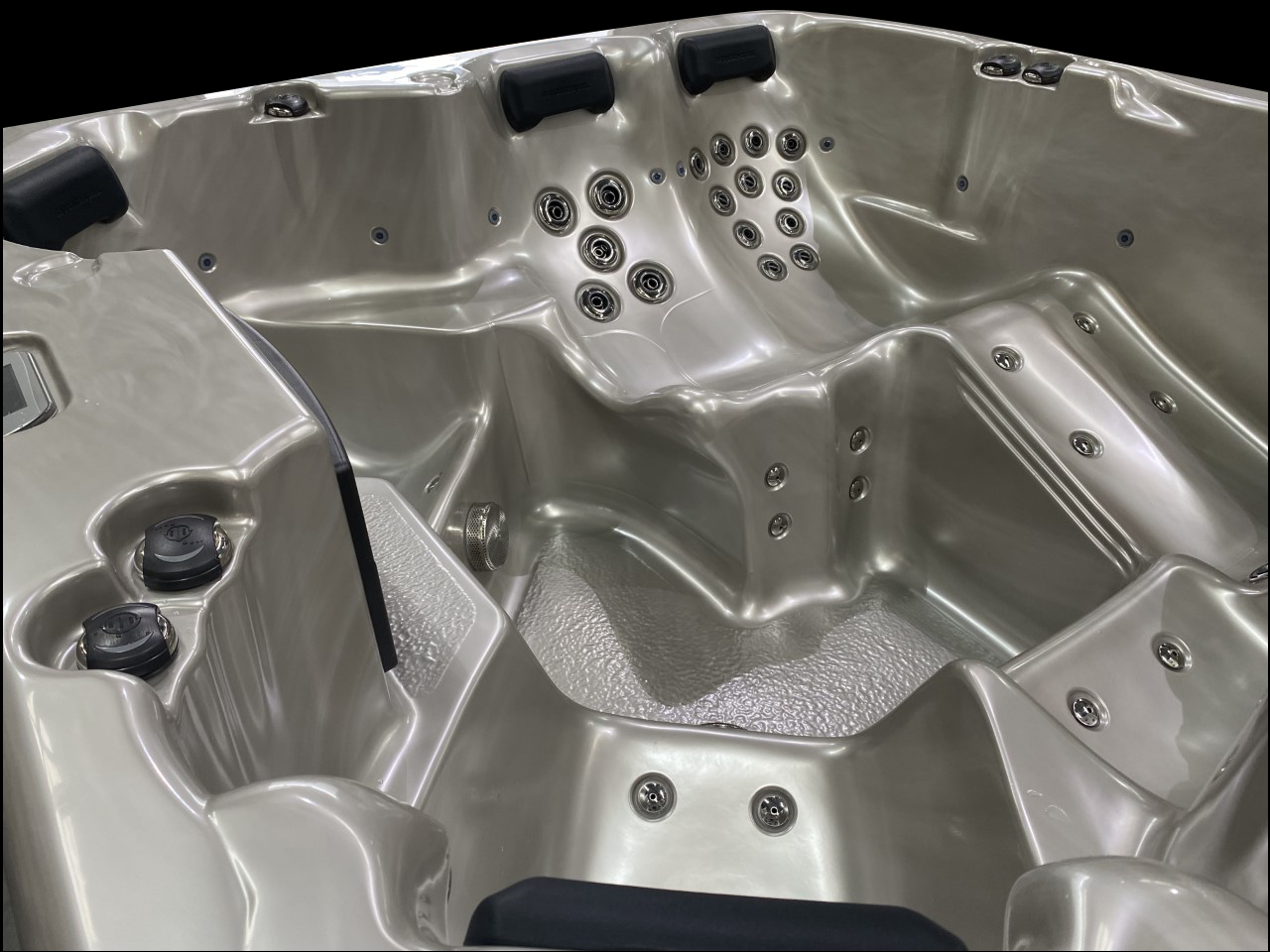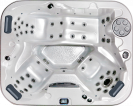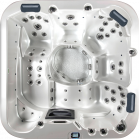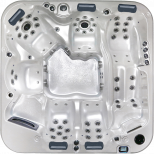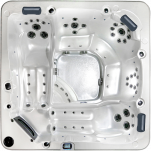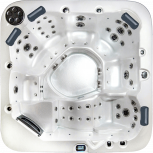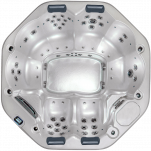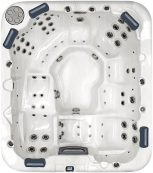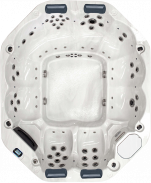Energy Consumption
The biggest cost of operating a spa is the energy costs associated with heating and running your spa. There are a lot of things that you can do to decrease your energy use, this includes turning off your water heater when your spa will not be used for a long time, keeping your spa covered with a quality insulating cover when not being used and purchasing a high-quality spa with good thermal insulation properties around the shell of the spa. All of these are standard inclusions when you buy a spa from Sapphire Spas, but let’s discuss numbers.
The three main energy uses for a spa are:
Heating (and/or cooling)
There are two main heating options offered by Sapphire Spas, these are the PowerSmart variable water heater available in either 3kW or 6kW depending on your spa or a heat and cool pump.
Heat and cool pumps are available in three power outputs, 5.5, 8.8 or 12kW, but because of their efficiency they only draw 1.1, 1.76 or 2.4kW respectively, when operating. With a spa heater typically operating for 10 minutes out of every hour (about 4 hours per day), this makes the total power use between 4.4 - 24kWh per day, depending on your heater choice. With an average cost of $0.30/kWh in Australia this will typically cost between $1.32 - $7.20 per day. It’s worth noting that even a 12kW heat pump will use less energy than the smallest Powersmart variable heater while delivering 4 times the energy output, meaning that it will run less often to maintain your spa at the same temperature.
Overall, the cost to heat your spa can vary wildly, most significantly depending on climate and the temperature you set your spa to. A spa set at 12-18 degrees will use much less power than one cranked up at 38-40 degrees. Depending on the heating option you choose and how you operate it, your heating cost could be as little as $0.35/day.
Filtration and sanitisation
Filtration is something that has to be done even when the spa is not in use, the actual amount and frequency of filtration cycles don’t change much with use. However, the life of the filters and consumables generally will be affected by use frequency.
Regarding sanitization, a general rule of thumb is that a spa pool will require 4 to 6 hours a day and swim spas will require 6 to 8 hours per day. If power consumption is a concern, the Clearzone ozone sanitisation system only uses 0.14amps and runs off the low speed circulation pump which draws minimal electricity. Running the Clearzone system on a typical spa pool adds up to about 73kWh or just $22 per year (at $0.30/kWh).
Pumps, Circulation and Operation
When not in use your spa will use minimal power for daily filtration cycles and these cycles will be timed to match up with your heating and sanitization cycles so that the one pump operation can provide the flow needed for all functions.
The most major power use will be when operating your spa, most small spas will require just 15A to operate, with medium-size spas requiring 32A and swim spas and large spa pools requiring up to 45A. This means that when operating, your spa will use 3.6kWh, 7.7kWh or 10.8kWh. Depending on your local electricity cost, duration of use and whether you use your spa during on-peak or off-peak times your costs could be as little as $0.82/hr or up to $2.2/hr or more. Either way, that means for less than the cost of a cup of coffee you and the whole family can rest in tranquil bliss.
Chemical Use
The final cost to consider is the cost of chemicals. This is one of the most variable costs of operating a spa as the size, cleanliness, water hardness, local environmental factors and use frequency all come into play.
First, be aware that a quality ozone sanitisation system like a Clearzone combined UV-C and ozone system will dramatically reduce the sanitiser requirement (by as much as 70%) but you will still need to add some sanitiser. For a typical spa pool of 1200L this means you will need about 1kg of pool chlorine per year, with a quality product costing $22/kg. You will also need test strips that will usually cost about $50/year when testing weekly, plus other chemicals as required to clean filter pods and maintain water balance. A ballpark figure of $150-$200 per year for testing and water maintenance chemicals will be sufficient for most spa users.



